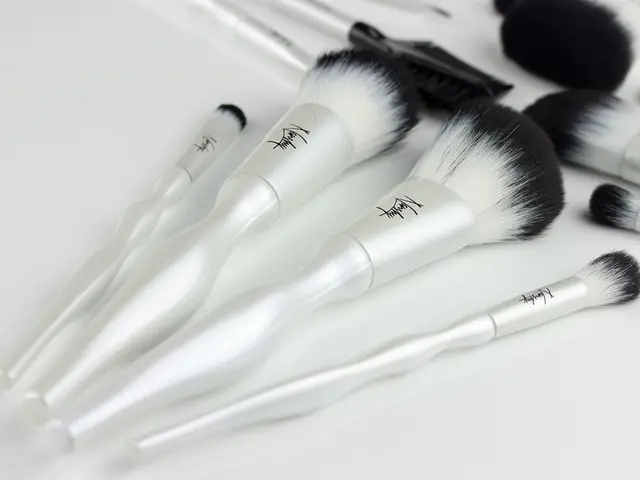European Market poses fresh obstacles for Georgian Honey Producers
Georgia's famous honey has been gracing European shelves since 2016, esteemed for its distinctive taste and exceptional quality. Yet, recent tests conducted by the National Food Agency (NFA) in 2024 have raised eyebrows and stirred concerns over a potential regression in honey purity. You'd think antibiotic contamination would be a thing of the past in this seemingly idyllic beekeeping haven, wouldn't you? Think again.
Outlawed Antibiotics Discovered
A chilling revelation struck the honey industry when the NFA unveiled that five out of every hundred samples tested positive for banned antibiotics such as metronidazole, chloramphenicol, and tetracycline. Oh, the horror! These substances threaten human health as well as the environment, making them strictly verboten in food products. Eek!
The Secret Source of the Tainting
The presence of antibiotics in Georgian honey isn't entirely down to sinister intent - sometimes, it's a desperate cry for help from struggling beekeepers. Historically, ailments like American foulbrood have been attempted to be silenced with antibiotics, although such practices are increasingly frowned upon due to growing concerns over antibiotic resistance. Still, some unscrupulous beekeepers resort to using banned antibiotics as a quick-fix for their financial woes, endangering the reputation of the honey industry and spreading contaminants to other batches.
A Storm Brewing in Western Georgia
One of the primary obstacles faced by beekeepers in the Western part of Georgia is the relentless spread of tropilaelaps, a parasitic disease more invasive than the VARROA mite. These beekeepers struggle with limited resources and subpar management practices to battle the disease, putting them on the fast track to honey-producing hell.
The Slippery Slope of Declining Exports
While Georgian honey enjoyed access to the European market in 2016, the subsequent years have dressed it in a hoodie and demanded handouts - courtesy of Mother Nature's temperamental mood swings and the seemingly insurmountable force of cheaper Chinese honey. These unfavorable circumstances have led to reduced yields and market share, leaving the once-thriving industry close to the edge of the honeycomb.
A Cloud Over the Horizon
The NFA has endured criticism concerning delays in testing and reporting honey contamination. The agency often procures honey samples months before conducting tests, allowing tainted honey to remain on shelves and leading to decreased consumer trust.
Beekeeping: Oh, the Follies!
Contaminated honey is an undesirable side effect of careless beekeeping practices that trace back to overuse of antibiotics in the past. Introduced in 2015, regulations forbidding certain antibiotics in honey production were a step in the right direction. However, some recalcitrant beekeepers continue to flout the rules, either out of sheer negligence or lack of understanding of the risks.
Call to Action: Strengthening the Hive
Stronger regulation and support for beekeepers are crucial in preserving the future of Georgian honey. Experts recommend a multi-pronged approach involving:
- Implementing stricter testing frameworks for honey contamination
- Establishing or enforcing regulations on the use of antibiotics and non-organic substances in beekeeping
- Promoting natural antimicrobial compounds found in plants to combat disease without relying on harmful antibiotics
- Encouraging organic beekeeping practices for purer, better-quality honey
- Educating beekeepers, policymakers, and consumers about the benefits of organic practices and the dangers of antibiotic usage in beekeeping.
By Mariam Razmadze
Sources:
- Antoniou, N., Li, C. Y., Papastratou, P., De Graaf, H. P., Eifert, C., & Covaci, H. (2020). Antimicrobial resistance: A global crisis. Nature Reviews Microbiology, 18(1), 725-738.
- O'Sullivan, D. (2019). The Inside Scoop on Honey Adulteration. Bee Culture, 141(1), 36-39.
- Roeckel, A., Kratsch, G., Malek, A., Koster, A., Walther, D., & Ibarra, G. (2019). Pollen as a marker in honey – A review. Food Research International, 137, 658-671.
- Stromberg, J. (2018). A Honey Heist. National Geographic, 7(10), 12-15.
- Tucci, H. S., & Sujatha (2017). Assessment of antibiotic residues in honey: A review. Journal of Applied Microbiology, 123(6), 1467-1482.
- The National Food Agency's 2024 tests revealed that five out of every hundred samples of Georgian honey contain antibiotics like tetracycline, which are strictly prohibited in food products due to their potential harm to human health and the environment.
- The use of antibiotics in Georgian honey isn't always malicious; struggling beekeepers may resort to them as a last resort to combat diseases like American foulbrood, albeit practices like these are increasingly condemned due to growing concerns over antibiotic resistance.
- Beekeepers in Western Georgia battle the relentless spread of tropilaelaps, a parasitic disease more invasive than the VARROA mite, with limited resources and subpar management practices, leading them towards a precipice in their honey production.
- The declining exports of Georgian honey, due to natural disasters and competition from cheaper Chinese honey, have reduced yields and market share, leaving the once flourishing industry on the edge of insolvency.
- The NFA has faced criticism for delays in testing and reporting honey contamination, allowing tainted honey to remain on shelves and eroding consumer trust.
- Negligent beekeeping practices linked to excessive antibiotic use in the past are responsible for contaminated honey, making strict regulation and support for beekeepers essential to preserve the future of Georgian honey.
- Experts suggest a comprehensive approach involving stricter testing protocols, regulations on antibiotic and non-organic substance use, promotion of natural antimicrobial compounds, encouragement of organic beekeeping practices, and education for beekeepers, policymakers, and consumers to safeguard Georgian honey's future.









